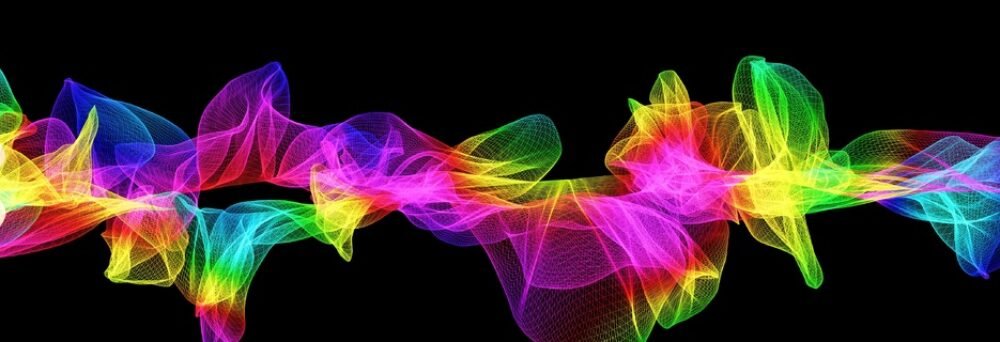Explore the enduring legacy and future of US reconnaissance and surveillance aircraft. Discover their impact on military strategy and technological advancements.
Eyes in the Sky: The Enduring Legacy and Future of US Reconnaissance and Surveillance Aircraft
From the fledgling days of balloon observation during the Civil War to today’s sophisticated unmanned aerial systems, the United States has consistently sought to gain a critical advantage through aerial intelligence. Reconnaissance and surveillance aircraft, often operating in the shadows and at the cutting edge of aerospace technology, have played an indispensable role in national security, military operations, and even international diplomacy. This blog post delves into the fascinating history, current capabilities, and exciting future of these silent sentinels of the sky.
E-8C Joint STARS reconnaissancesurveillance aircraft
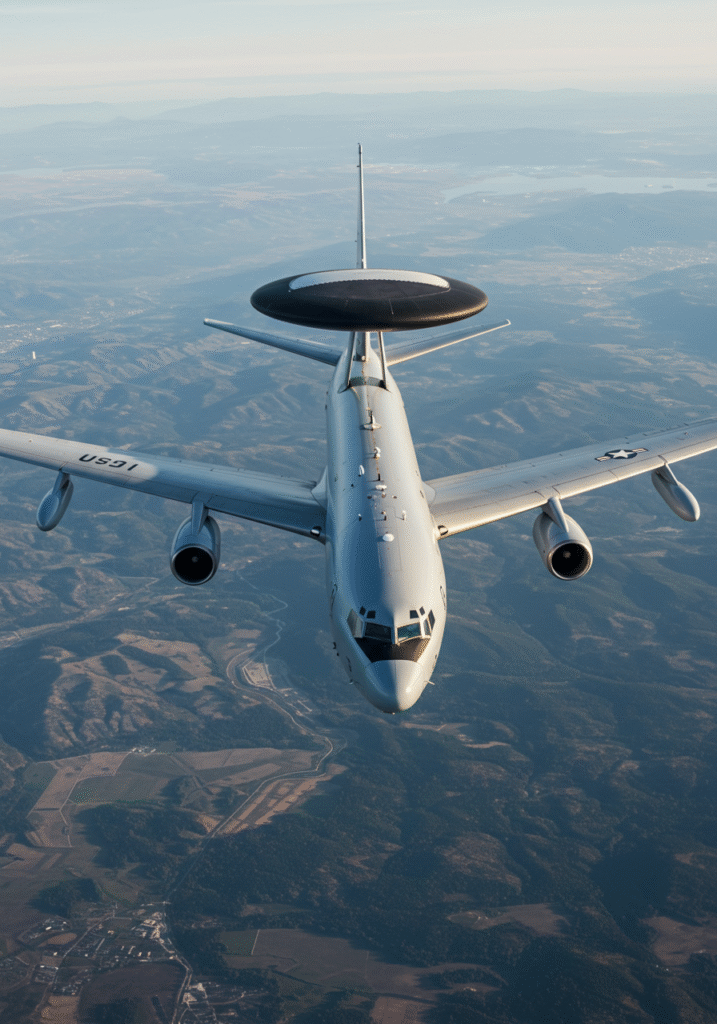
This is an aerial photograph of a large, light-colored aircraft, likely a military surveillance or command and control plane, flying over a landscape of hills and possibly a body of water in the distance. The aircraft is equipped with a distinctive large, circular radar dome mounted on its upper fuselage, characteristic of an AWACS (Airborne Warning and Control System) aircraft.
The plane is seen from a slightly lower, head-on perspective, showcasing its four engines (two under each wing), and what appears to be US military insignia on its wings. The tail of the aircraft is visible at the very top. The lighting suggests daytime with clear skies, and the details of the landscape below are somewhat blurred, indicating the altitude of the aircraft. The overall impression is one of a powerful and specialized aircraft in operation.
MC-12W Liberty reconnaissance-surveillance aircraft
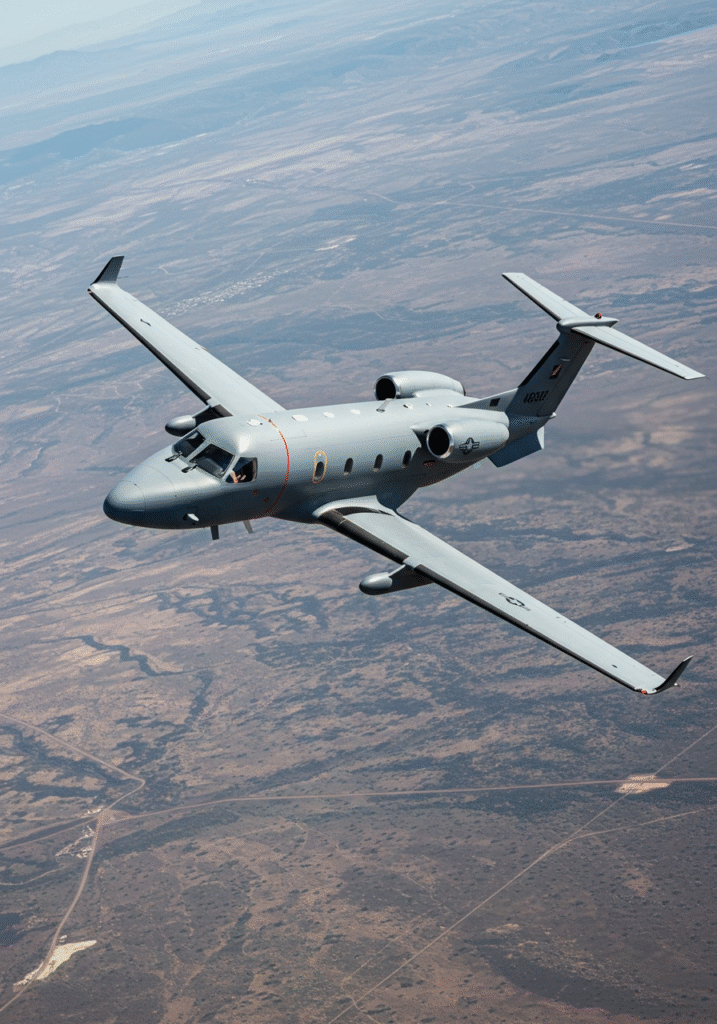
This is an aerial photograph of a grey, twin-engine jet aircraft, likely a military or specialized executive jet, in flight. The plane is seen from an angled, slightly elevated perspective against a blurred background of what appears to be a dry, arid landscape with some scattered vegetation and faint indications of roads or human activity.
The aircraft has swept wings with winglets and two engines mounted on the rear fuselage. There are visible markings on the tail and possibly under the wings, though they are not clearly discernible. The overall impression is of a sleek and modern aircraft in motion, flying over a vast, sparsely populated area. The lighting suggests it’s daytime with good visibility.
RC-135 (various variants like Cobra Ball, Rivet Joint, Combat Sent)
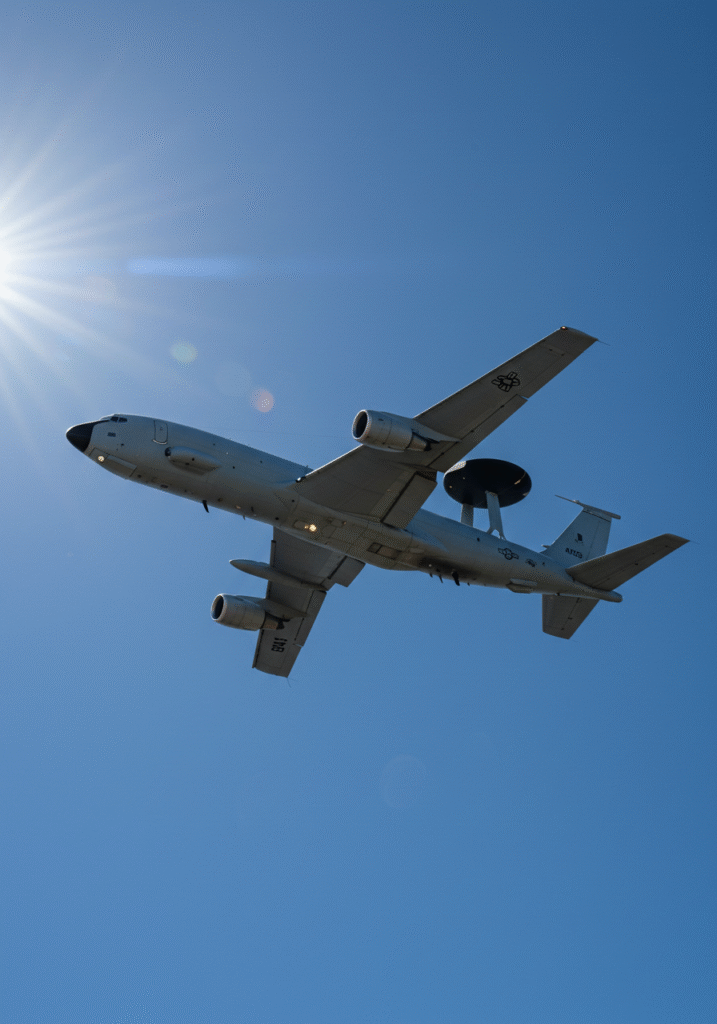
This is a low-angle shot of a large, light-colored aircraft, likely a military surveillance plane, ascending against a clear, bright blue sky. The sun is visible in the upper left corner, creating a lens flare and emphasizing the brightness of the day.
The aircraft is an AWACS (Airborne Warning and Control System) type, identifiable by the distinctive large, circular radar dome mounted on struts above its fuselage. It has four engines, two under each wing, and a T-tail configuration. The underside of the aircraft is well-lit, revealing various antennae or sensors. The perspective makes the plane appear powerful and in motion, climbing into the sky.
RQ-4 Global Hawk (unmanned) reconnaissancesurveillance aircraft
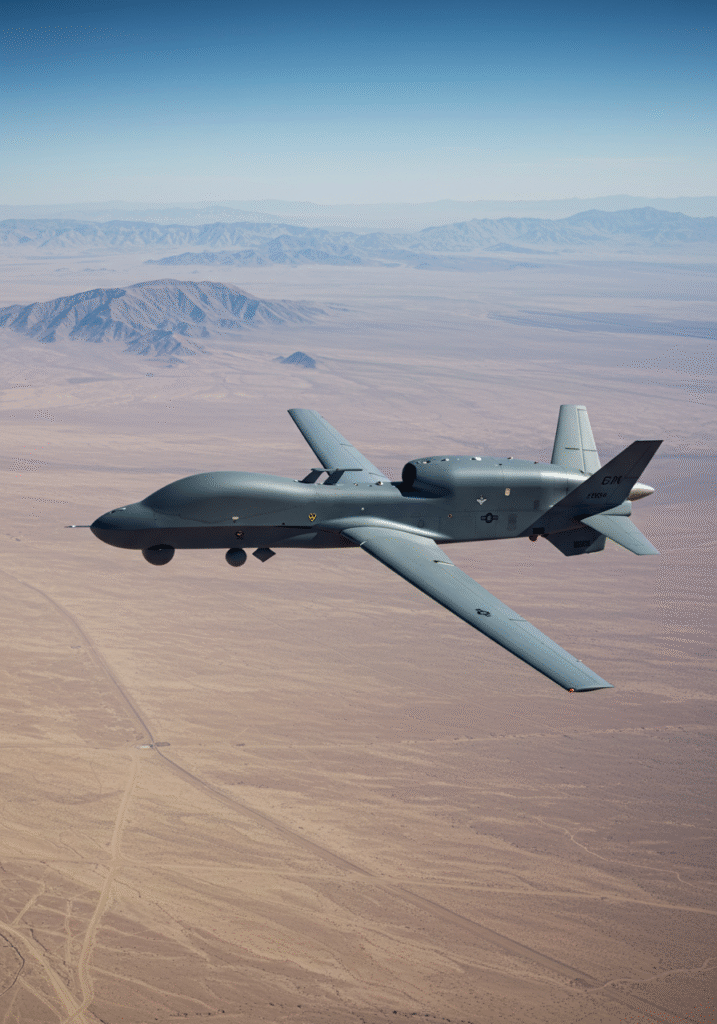
This is an aerial photograph of a large, grey, unmanned aerial vehicle (UAV), commonly known as a drone, flying over a vast, arid, and mountainous landscape. The drone, which appears to be a military reconnaissance type such as the RQ-4 Global Hawk, has a sleek, streamlined fuselage, long, slender wings with anhedral (downward angle), and a V-tail.
It is seen from a slightly elevated, angled perspective, showcasing its single engine intake on top of the fuselage and what looks like a dorsal hump for satellite communication. The ground below is a mix of desert terrain with visible dirt roads or tracks, and distant mountain ranges under a clear, blue sky. The overall impression is one of advanced technology operating in a remote and open environment.
U-2 Dragon Lady reconnaissancesurveillance aircraft
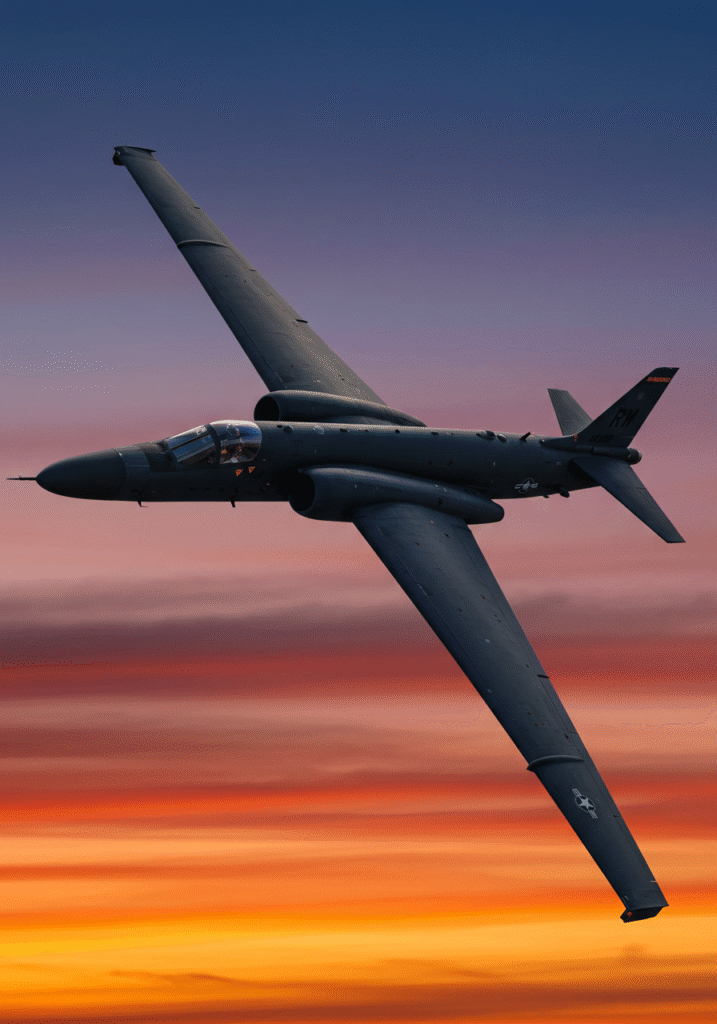
This is a dramatic aerial photograph of a dark-colored, single-engine reconnaissance aircraft, likely a U-2 Dragon Lady, soaring through the sky against a vibrant sunset or sunrise backdrop. The long, slender, high-aspect-ratio wings are a prominent feature, extending far out from the fuselage.
The aircraft is seen from a slightly lower, angled perspective, showcasing its distinctive design. The sky behind it transitions from a deep blue at the top to fiery oranges, reds, and yellows near the bottom, creating a striking contrast with the dark silhouette of the plane. The overall impression is one of a solitary, high-altitude flight against a beautiful and powerful sky.
Conclusion
From rudimentary balloons to advanced, stealthy drones, US reconnaissance and surveillance aircraft have continuously pushed the boundaries of aviation and intelligence technology. These “eyes in the sky” provide invaluable insights, enabling informed decision-making, protecting national interests, and contributing to global stability. As technology continues to evolve, so too will the capabilities and roles of these crucial aerial assets, ensuring that the United States remains at the forefront of intelligence gathering for decades to come.
